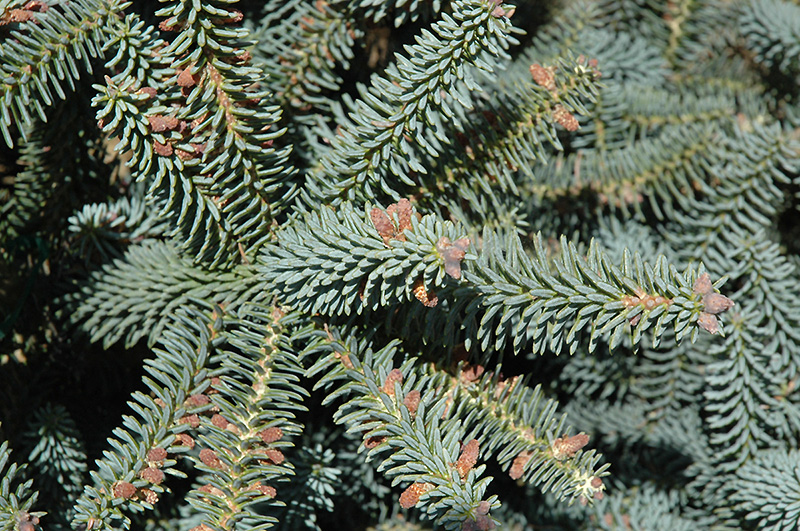Height: 45 feet
Spread: 24 feet
Sunlight:
![]()
Hardiness Zone: 6a
Other Names: Glaucous Spanish Fir
Description:
This is a stately evergreen with an interesting architectural branching structure; makes a wonderful focal point on the landscape; drought tolerant once established, and prefers to be sheltered
Ornamental Features
Blue Spanish Fir is primarily valued in the landscape for its distinctively pyramidal habit of growth. It has attractive grayish green evergreen foliage. The needles are highly ornamental and remain grayish green throughout the winter. The purple fruits are held in cones from late summer to late winter. The smooth gray bark adds an interesting dimension to the landscape.
Landscape Attributes
Blue Spanish Fir is a dense evergreen tree with a strong central leader and a distinctive and refined pyramidal form. Its relatively fine texture sets it apart from other landscape plants with less refined foliage.
This is a relatively low maintenance tree, and usually looks its best without pruning, although it will tolerate pruning. It has no significant negative characteristics.
Blue Spanish Fir is recommended for the following landscape applications;
- Vertical Accent
- Hedges/Screening
- Windbreaks and Shelterbelts
- Naturalizing And Woodland Gardens
Planting & Growing
Blue Spanish Fir will grow to be about 45 feet tall at maturity, with a spread of 24 feet. It has a low canopy, and should not be planted underneath power lines. It grows at a slow rate, and under ideal conditions can be expected to live for 50 years or more.
This tree should only be grown in full sunlight. It does best in average to evenly moist conditions, but will not tolerate standing water. It is not particular as to soil type, but has a definite preference for acidic soils. It is quite intolerant of urban pollution, therefore inner city or urban streetside plantings are best avoided, and will benefit from being planted in a relatively sheltered location. Consider applying a thick mulch around the root zone in both summer and winter to conserve soil moisture and protect it in exposed locations or colder microclimates. This is a selected variety of a species not originally from North America.

